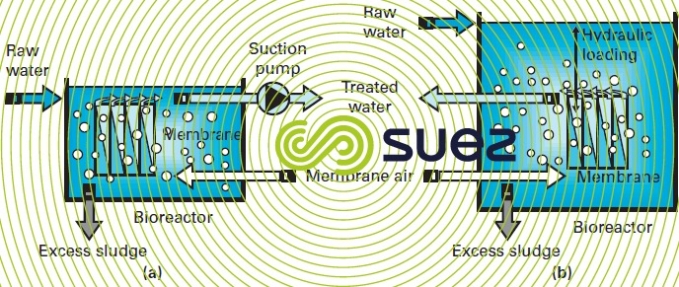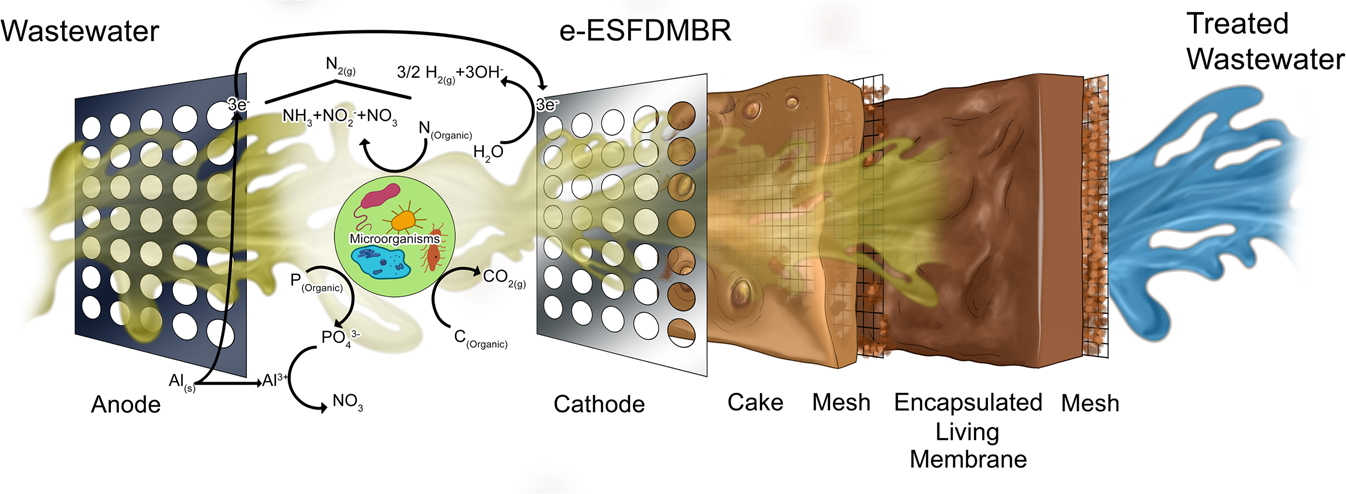The Science Behind Membrane Bioreactor: How It Works and Why It’s Effective
The Science Behind Membrane Bioreactor: How It Works and Why It’s Effective
Blog Article
The Benefits of Membrane Bioreactors in Lasting Wastewater Administration
Membrane bioreactors (MBRs) represent an essential advancement in sustainable wastewater administration, successfully combining organic therapy with sophisticated membrane purification technology. As the demand for sustainable services intensifies, checking out the diverse benefits of MBRs may disclose unforeseen implications for the future of wastewater treatment systems.
Review of Membrane Layer Bioreactors
Membrane layer bioreactors (MBRs) stand for a considerable advancement in wastewater therapy modern technology, incorporating organic deterioration with membrane filtration to enhance the efficiency of the treatment process. This cutting-edge system incorporates the benefits of traditional triggered sludge processes with membrane technology, allowing for boosted solid-liquid splitting up. MBRs make use of semi-permeable membrane layers to different treated water from biomass, resulting in top notch effluent that can be recycled or safely discharged right into the setting.
The functional design of MBRs generally involves a bioreactor where microbes break down raw material, followed by a membrane layer system that filters the combined alcohol. This arrangement not only reduces the impact of the therapy center however likewise permits greater biomass concentrations and reduced hydraulic retention times. In addition, MBRs are qualified of dealing with a larger series of pollutants, including virus and nutrients, making them suitable for numerous applications, from local wastewater treatment to commercial effluent processing.
The integration of MBRs into wastewater monitoring systems is a sign of an expanding trend towards lasting and efficient techniques in environmental design. Their capacity to produce top notch effluent while minimizing area needs positions MBR technology as a crucial player in modern wastewater treatment options.
Boosted Effluent High Quality

The membrane layer filtering procedure functions as a physical barrier, allowing the retention of microorganisms and particle matter, which adds to a more clear and cleaner effluent (Membrane Bioreactor). MBRs operate at greater biomass concentrations than standard activated sludge systems, promoting extra effective biodegradation of toxins. This leads to a reduction in biochemical oxygen need (BOD) and complete put on hold solids (TSS) levels in the final effluent
Additionally, MBRs show excellent performance in dealing with challenging wastewater make-ups, such as industrial effluents and wastewater with high nutrient loads. Because of this, the effluent produced is often of higher quality, permitting for more flexible disposal choices and lowered environmental effect. Eventually, the enhanced effluent quality accomplished with MBR modern technology emphasizes its vital duty in progressing lasting wastewater monitoring methods.
Water Reuse Opportunities
The high-grade effluent produced by membrane bioreactors (MBRs) opens substantial opportunities for water reuse in various applications. MBRs successfully eliminate pollutants, consisting of virus, put on hold solids, and raw material, leading to cured water that meets or goes beyond governing requirements for reuse. This top quality permits for the execution of water reusing efforts throughout varied markets.
One famous application is in agriculture, where treated wastewater can be utilized for watering, advertising sustainable farming methods while conserving fresh water sources. Additionally, MBR-treated effluent can be used for industrial procedures such as cooling, cleaning, and as a procedure water resource, substantially minimizing the demand for safe and clean water in these operations.
In metropolitan environments, MBRs promote using redeemed water for landscape irrigation, bathroom flushing, and other non-potable usages, adding to the total durability of water click here for more system systems. The combination of MBR technology in decentralized systems help in managing localized water demands, especially in water-scarce areas.
Minimized Ecological Effect
How can the adoption of membrane layer bioreactors (MBRs) contribute to a lowered environmental influence in wastewater management? MBRs dramatically enhance the therapy efficiency of wastewater while lessening eco-friendly disturbances. By integrating organic treatment processes with membrane you can look here layer filtration, MBRs efficiently get rid of a broad array of pollutants, including natural issue, nutrients, and pathogens. This sophisticated filtration causes higher-quality effluent, which is important for securing marine communities and reducing the worry on natural water bodies.
Furthermore, MBRs run at lower hydraulic retention times compared to standard systems, leading to smaller sized therapy plant footprints. This small style minimizes land usage, thus protecting natural habitats and biodiversity. The procedure likewise creates much less sludge than typical approaches, reducing disposal difficulties and reducing greenhouse gas discharges connected with sludge management.
Furthermore, MBRs help with the recovery of valuable sources, such as water and nutrients, adding to a round economic situation. By allowing water reuse for irrigation or commercial procedures, MBRs aid relieve freshwater shortage, thus advertising sustainable water utilize techniques. Inevitably, the adoption of MBR innovation represents a significant stride in the direction of lessening the environmental effect of wastewater administration systems.
Financial Benefits of MBRs

Additionally, MBRs promote the production of top quality effluent, which can be reused for various applications, such as agricultural watering and industrial procedures - Membrane Bioreactor. This reuse capacity can significantly decrease water procurement why not check here prices, offering a monetary incentive for industries facing rigid water policies
The portable style of MBR systems likewise results in reduced land requirements, which is specifically valuable in urban locations where realty is expensive. By lessening area, markets and municipalities can save money on land procurement and upkeep costs.
Furthermore, MBRs frequently require less regular maintenance and have a longer life-span than traditional systems, better adding to cost financial savings. In summary, the economic advantages of MBRs-- ranging from minimized operational prices to land cost savings and effluent reuse-- make them a compelling selection for sustainable wastewater management, using both long-term and immediate economic benefits.
Conclusion
Furthermore, MBRs contribute to reduced environmental effects via portable styles and lower sludge generation. Economic benefits additionally improve their feasibility, making MBRs an appealing solution for resolving the difficulties of wastewater treatment and promoting lasting resource monitoring.
Membrane layer bioreactors (MBRs) represent an essential improvement in sustainable wastewater monitoring, efficiently combining organic treatment with sophisticated membrane layer filtration modern technology.Membrane layer bioreactors (MBRs) represent a substantial improvement in wastewater therapy innovation, integrating organic degradation with membrane layer filtration to improve the efficiency of the therapy process.Accomplishing boosted effluent high quality is one of the most substantial advantages of using membrane bioreactors (MBRs) in wastewater therapy.Additionally, MBRs demonstrate superb performance in dealing with challenging wastewater structures, such as commercial effluents and wastewater with high nutrient loads.Incorporating membrane bioreactors (MBRs) into wastewater monitoring not just decreases ecological impact however additionally presents considerable financial benefits.
Report this page